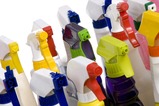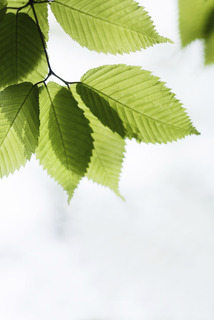Cleaning Chemicals Definitions
Cleaning chemicals definitions will help you understand many of the terms used to describe certain families of chemicals used in common cleaning products.
If you are looking for definitions of the warning label, check out the product warning label page.
ANTI-FOAMING AGENT
An additive that stops foam from forming, or is added to break down foam that is already formed.
Non-toxic Anti-foaming Agents
ANTI-REDEPOSITIONER
An additive used in a detergent that suspends soil in water so that it cannot resettle on a fabric after it has been removed during washing.
Non-toxic Anti-redepositioners

BLEACHING AGENT
Bleaching agents remove color from things like textiles People used to bleach fabrics by exposing them to the sun and air. Today most commercial bleaches are chemicals, like chlorine bleach (sodium hypochlorite) or hydrogen peroxide.
Bleaching agents sometimes also work as disinfectants.
Low Toxicity Bleaching Agents
Toxic Bleaching Agents
DETERGENT
A cleaning agent that improves the ability of water to penetrate fabric and break down greases and dirt. Detergents act like soap but are made from chemical compounds rather than fats and alkalies. Also, unlike soap, they remain dissolved in the presence of calcium in hard water.
DETERGENT ENHANCER
Generic term for any chemical that enhances a detergent – including but not limited to anti-redepositioners, foaming agents, surfactants, and solvents.
DISINFECTANT
Substances that either kill or slow the growth of bacteria, fungi, viruses and parasites on non-living objects. The most common disinfectants are sodium hypochlorite, hydrogen peroxide, colloidal silver, phenols, and quaternary ammonium compounds.
Understanding Disinfectants
Non-toxic Disinfectants
Toxic Disinfectants
FABRIC SOFTENER
Commercial fabric softeners coat the surface of the cloth fibers with a thin layer of lubricating chemicals that also prevent the buildup of static electricity. This also reduces the absorbency of towels, cloth diapers and microfiber cleaning products.
Vinegar works by neutralizing the electrical charge on the surface of most fibers – resulting in a smoother feel and reduced static. It also removes any residues left behind from detergents.
 FOAMING AGENT
FOAMING AGENT
A foaming agent is a chemical compound which helps the formation of foam/bubbles or helps foam maintain its integrity by strengthening individual foam bubbles. Foaming agents are surfactants, reducing surface tension and helping to ‘spread out’ the substance they have been mixed in to.
Non-toxic Foaming Agents
Toxic Foaming Agents
PERFUME
A mixture of fragrant essential oils (natural or man-made), a fixative (natural or man-made), and alcohol used to give people and products a long-lasting and pleasant smell.
Non-toxic Perfume Ingredients
Toxic Perfume Ingredients
SOAP
A cleaning agent that dissolves in water and forms a lather. Soap is produced by combining fats, or oleic, stearic, or palmitic fatty acids with alkalies, such as salts of sodium, potassium, etc., with the (oleic, stearic, palmitic, etc.). Soap generally forms insoluble by-products when calcium is present in the water.
SOLVENT
A substance, usually a liquid, capable of dissolving another liquid, semi-solid or solid.
Non-toxic Solvents
Toxic Solvents
SURFACTANT
Surfactants lower the surface tension of a liquid, making it easier for the liquid to spread.
Non-toxic Surfactants
Toxic Surfactants
WATER CONDITIONER
Water Conditioners change the behavior of Calcium and Magnesium ions so that they are no longer able to cause adhesive scale.
Non-toxic Water Conditioners
Toxic Water Conditioners
Back to
Housecleaning Products
from Cleaning Chemicals Definitions
Back to
House Cleaning Home Page
from Cleaning Chemicals Definitions





